6th Airborne Division:
How effective was its contribution to the success of the D-Day landings in Normandy 1944?
Malcolm A. Clough
D-Day Tours of Normandy
A dissertation, posted in seven parts (plus appendices)
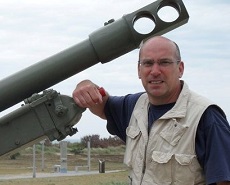
Part 1: Introduction
Part 2: The Development of British Airborne Forces
Part 3: The Arms and Equipment of British Airborne Forces
Part 4: The Importance of Fire Support provided to 6th Airborne
Part 5: Planning and preparation for D-Day
Part 6: The Actions and Outcomes of 6th Airborne’s Operations
Part 7: Conclusions
.
.
Part 3: The Arms and Equipment of British Airborne Forces
6th Airborne Division:
How effective was its contribution to the success of the D-Day landings in Normandy 1944?
Malcolm A. Clough
General Gale and his commanders were well aware that landing the soldier by parachute or by glider was only the beginning of an airborne operation. It was the forthcoming battle that mattered and not the jump. It was essential to land as many men as possible safely, in the right place and with the right equipment to carry out their task. The arms and equipment used by 6th Airborne during the Normandy campaign were a mixture of standard British Army infantry weapons together with ideas copied from the Germans alongside equipment especially designed or adapted for use by airborne forces. Some of this equipment worked well and was very successful in particular the 17pdr Anti-Tank Gun, others such as the REBECCA/EUREKA homing beacons were experimental and had not been developed to their full potential. While some infantry weapons such as the Sten sub machine gun and the PIAT (Projector Infantry Anti-Tank) were significantly inferior to equivalent German weapons.
The British paratrooper used the X-Type parachute, described by Ferguson (1984:3) as ‘one of the best parachutes the world has seen’ which compared to its American and German counterparts gave a smooth, reliable and relatively shock-free opening. The parachute worked on the basis of a double bag system where the canopy was packed into a separate bag within the parachute pack. When the pack opened the rigging lines came out first followed by the small bag containing the canopy which was attached by a static line to the aircraft, once the rigging was deployed the second bag was pulled open by the paratroopers weight, deploying the canopy. This was a distinct advantage over the American Irvin T-7 parachute which opened canopy first, followed by the rigging which when taught broke the paratroopers free-fall with a significant jolt. The X-Type parachute was fitted with a quick release buckle which the T-7 did not have. This device saved many British paratroopers lives when the scattered sticks landed wide of their drop zones in areas flooded by the Germans, while their American comrades suffered from being dragged along while struggling to release their harnesses.
Merville Battery, silenced by the 6th Airborne Division
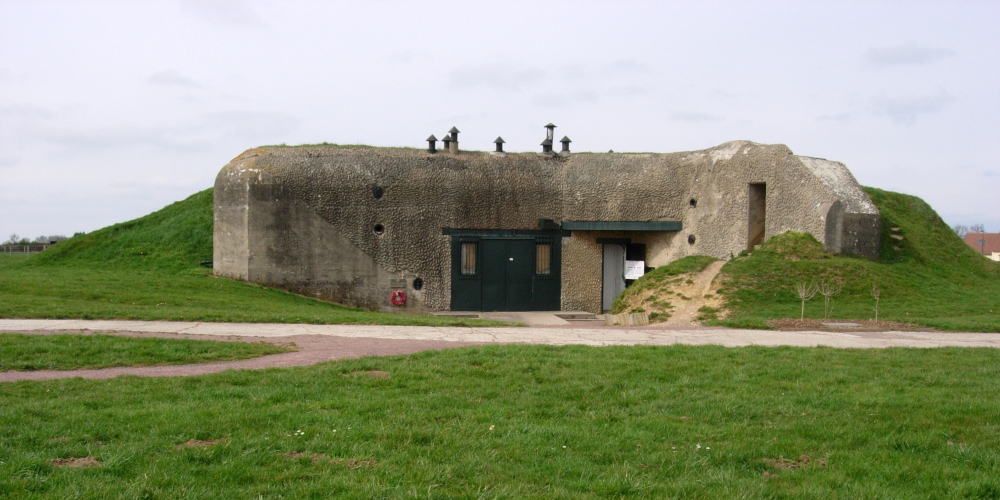
The Merville Gun Battery was part of the Nazis’ Atlantic Wall. It was a particularly heavily fortified position and was heroically silenced by soldiers of the 6th Airborne Division.
The greatest advantage of the X-type and T-7 parachutes was they allowed a soldier to jump with his rifle carried across his chest in a sleeve or valise which the German RZ parachute did not. The RZ parachute was attached to the jumper’s harness by a single support strap. The paratrooper was suspended beneath his harness in a forward diagonal position with both hands free but unable to reach his rigging lines to control his descent. His harness was too tight to tuck in any weapons and the all fours landing position made carrying any weapons other than a pistol and a few grenades too dangerous. German paratroopers relied upon separate containers to provide their weapons. This meant that until they found the containers and retrieved their weapons they were helpless ‘The tight harness and the need to have both hands free…meant that the Jaeger could carry no rifle…weapons were carried in a container…The absolute necessity of finding the containers was the flaw in German airborne procedures’ (Lucas, 1988: 178)
Early British parachute operations closely followed German lines. The raids on the Tragino Aqueduct and Bruneval Radar Station in 1942 were made using Whitley bombers to carry the paratroopers to the Drop Zones. The paratrooper’s equipment and small arms should have been dropped simultaneously in containers, but the release mechanisms on some of the bombers failed and the containers had to be taken back to England. Of those that were dropped some were lost and others took too long to retrieve. By 1944 slightly better aircraft with larger exit holes made it possible for paratroopers to jump carrying their equipment. (See Appendix)
The heavier weapons e.g. mortars and medium machine guns were still dropped by containers. These were fitted with a variety of flashing lights to aid their retrieval, but many were still lost. 9th Battalion was particularly affected by the loss of its equipment for the vital assault upon the Merville Battery. By H-Hour at 04.30hrs the battalion had recovered only one machine gun from the four dropped in containers and from the six bundles of Bangalore torpedoes only one had been found. (Barber, 2002:68)
The individual soldier now jumped with his kit bag. This development is described by Weeks (1982:61) as ‘a significant landmark in the development of airborne forces, a landmark which is all too often forgotten.’ The kit bag allowed a soldier to carry any amount of stores up to a maximum 60-80llbs (Weeks, 1982:63) the soldier made his jump holding his bag which was attached to his leg by a 20’ length of rope. Once his canopy had opened he released the rope and the bag was suspended below him. The problem with the kit bag was that if it was released incorrectly the bag fell away, the line broke and the kit bag and its contents were lost. The kit bag was much maligned by U.S. paratroopers as described by veterans in the T.V. Series Band of Brothers, (HBO, 2001) but the problem lay not with the kit bag but the robust canopy first opening method of the U.S. T-7 parachute which caused many American Paratroopers to lose their kit when the line attaching the bag to the paratrooper’s leg snapped under pressure from the sudden shock of the canopy opening.
Second World War period British airborne forces kitbag. Large canvas kit bag with padded base and canvas web leg straps.
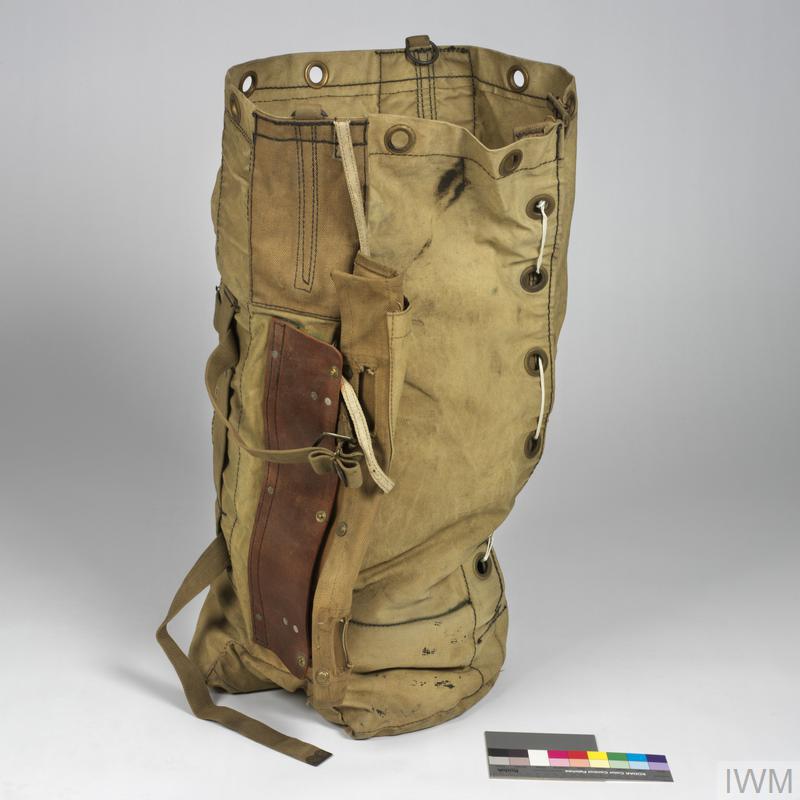
Developed in 1943, the airborne kit bag was designed to carry a paratrooper’s personal weapon and individual equipment. Weighing in as much as 100lbs, the bag was designed to be strapped to the soldier’s right leg. The base of the bag was heavily padded and there was ‘cut-in’ to accommodate the boot for a closer fit. With the facility to release the bag before landing by the quick-release straps, the soldier could jettison the bag but maintain connected to it by a length of rope.
British airborne forces were equipped with much the same small arms as those used by the regular infantry. Each infantry section had a Bren Light Machine, while the standard infantry rifle was the long established Lee-Enfield .303 (Mk 4). Officers and NCO’s had the Sten sub machine gun. Supporting fire would be provided by Vickers 1912 Medium machine Guns and 2-inch and 3- inch mortars with the PIAT providing an Anti-Tank capability (Ambrose, 1984:32). The Sten was a popular airborne soldier’s weapon, weighing only 7llbs it could be easily dismantled and carried tucked into a parachute harness or kitbag. It was cheap to manufacture, but it was a poor weapon with low hitting power and a tendency to jam.
The PIAT is described by Sgt Thornton MM as ‘a load of rubbish! The range is around about fifty yards and no more…one thing you must never do is miss. If you do you’ve had it’ (Ambrose, 1984:129). Yet for all its doubters the PIAT was responsible for two pivotal moments in 6th Airborne’s battle in Normandy. Thornton himself used one to destroy a German ‘tank’ at 01.15hrs on the morning of D-Day leading an early counter attack against Howard’s men at Pegasus Bridge (an act for which he was awarded the Military Medal) and Lance Corporal Stevenson’s party at Le Mesnil crossroads also in the early hours of D-Day hit and disabled six German half tracks using PIATS in 8 Para’s battle at Troan, which according to Lt Col Pearson was the best thing that could have happened ‘for by the time the survivors reached Troan their report would be grossly exaggerated and the enemy would believe that the ridge was held in great strength.’ (Thompson, 1989:166)
Projector, Infantry, Anti Tank. PIAT.
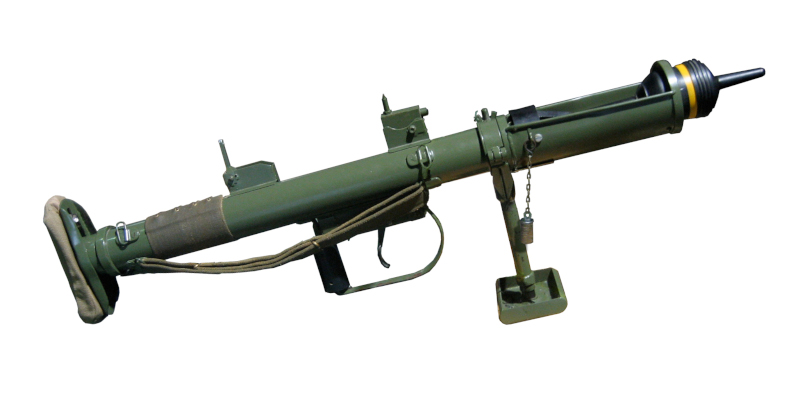
British PIAT Anti Tank Weapon
Once they had arrived in Normandy many airborne soldiers discarded their weapons in favour of captured German equipment which they considered to be far superior, particularly the MP38 Schmeisser Sub-Machine gun or the MG34 machine gun. ‘In this close and heavily wooded countryside I reckoned that it would be far more useful defensively than my single shot bolt action service rifle…my newly acquired Schmeisser was a work of art and engineering built to the highest German standards’ (Edwards,2005:83).
As Weeks describes it (1982:100), without heavier support weapons, any airborne force no matter how strong numerically ‘becomes little more than a raid or nuisance force. Once the defender could bring up some armour no matter how light the vehicles were…the parachutists were helpless.’ 6th Airborne therefore brought with it into battle its own artillery and anti-tank guns. However, in 1944 the largest object that could be dropped by parachute was a container which would hold nothing heavier than a 3inch mortar. All other heavier equipment had to be flown in by glider.
Within 6th Airborne the standard anti-tank platoon weapon was the 6 pounder-anti-tank gun. With a jeep to tow it, this could be carried in a Horsa glider. The 6pdr was effective against German self-propelled guns and the Mk III and Mk IV tanks, but would struggle against heavier vehicles such as the Mk V Panther and Mk VI Tiger. The 6pdr gave valuable service in repelling the many German counter attacks south of Ranville and Le Bas de Ranville. ‘These included a probe by four self-propelled guns advancing from Herouvillette, which was ended when 6-pdr guns knocked them out’ (Clarke, 2004:52). The larger Hamilcar glider with its capacity to carry a cargo of up to 7 tons allowed four of the more effective 17pdr anti-tank guns to be brought to the battle in the early morning glider landings of 6th June. The 17pdr is described by Crookenden (1976:197) as a ‘Powerful weapon that could knock out any known German tank and whose arrival in action that day came as a nasty surprise to the German armour.’


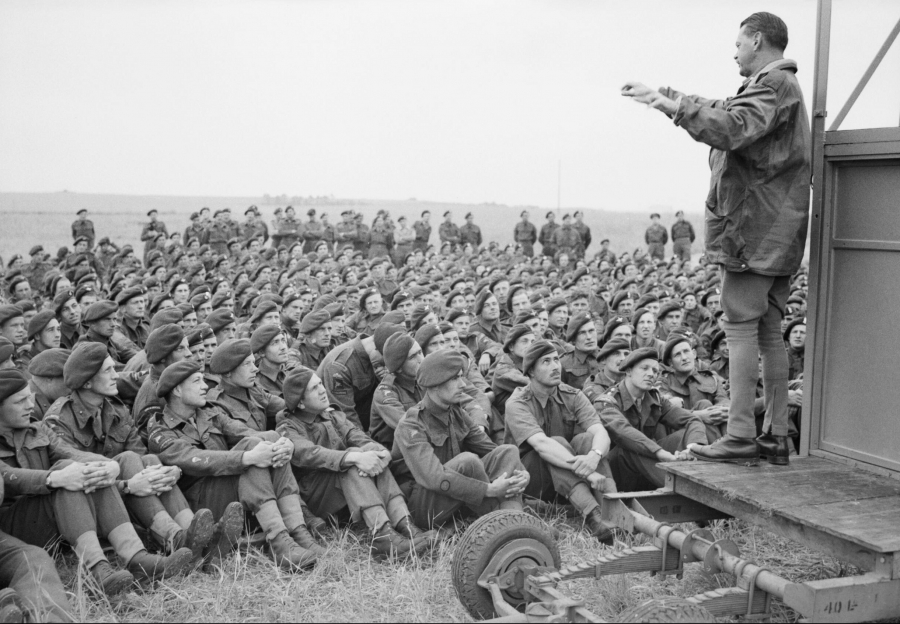

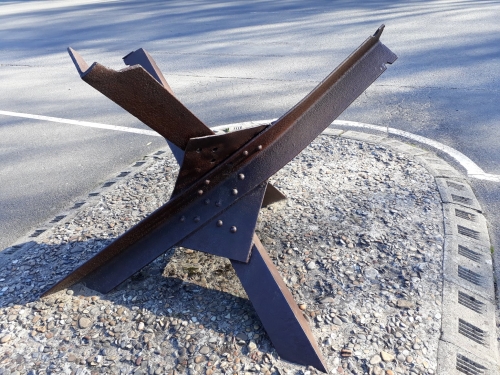
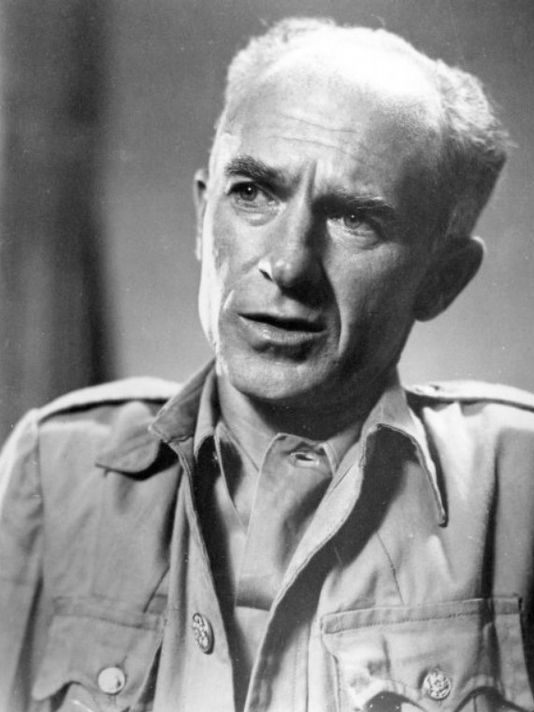
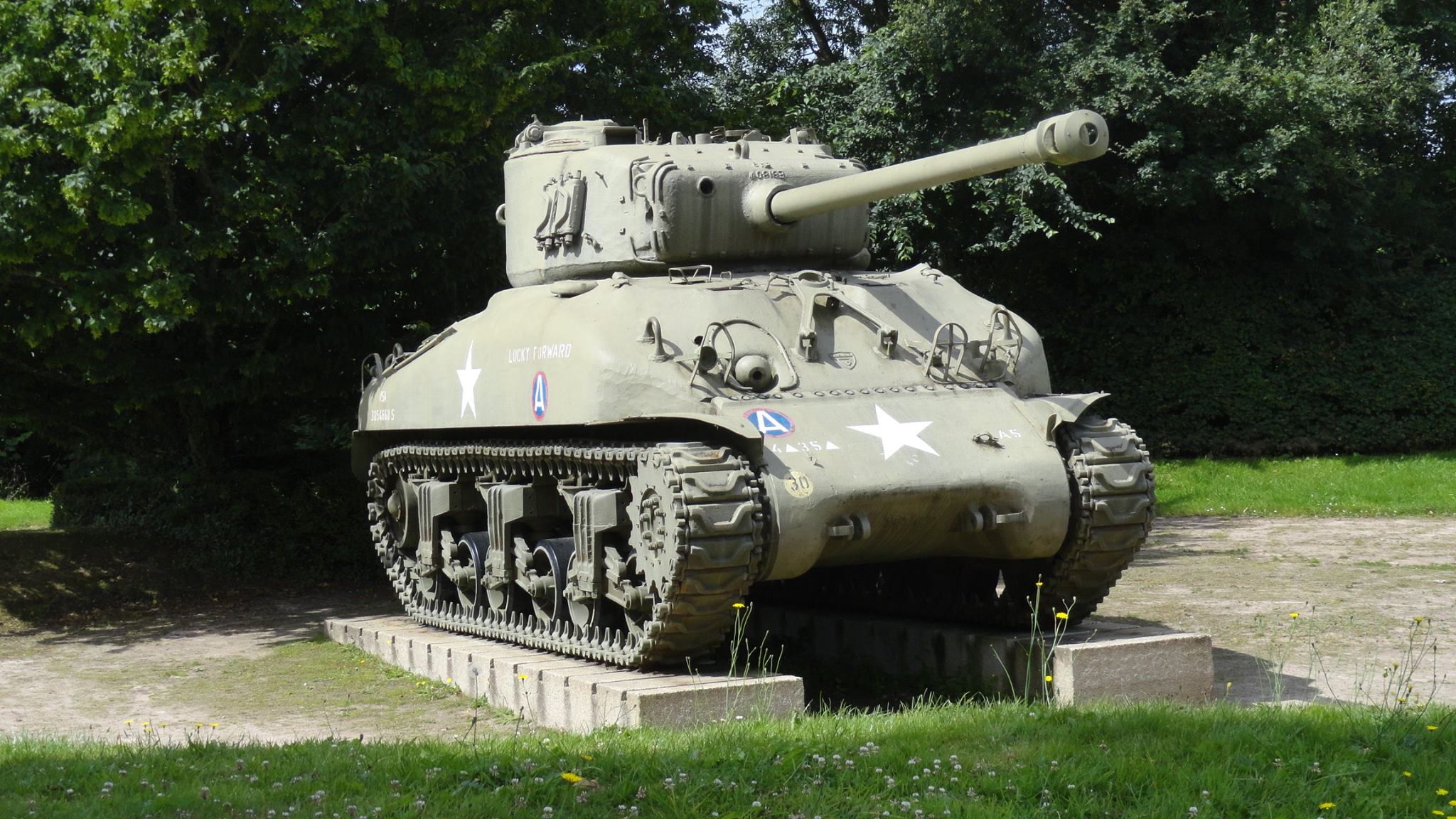
Leave A Comment